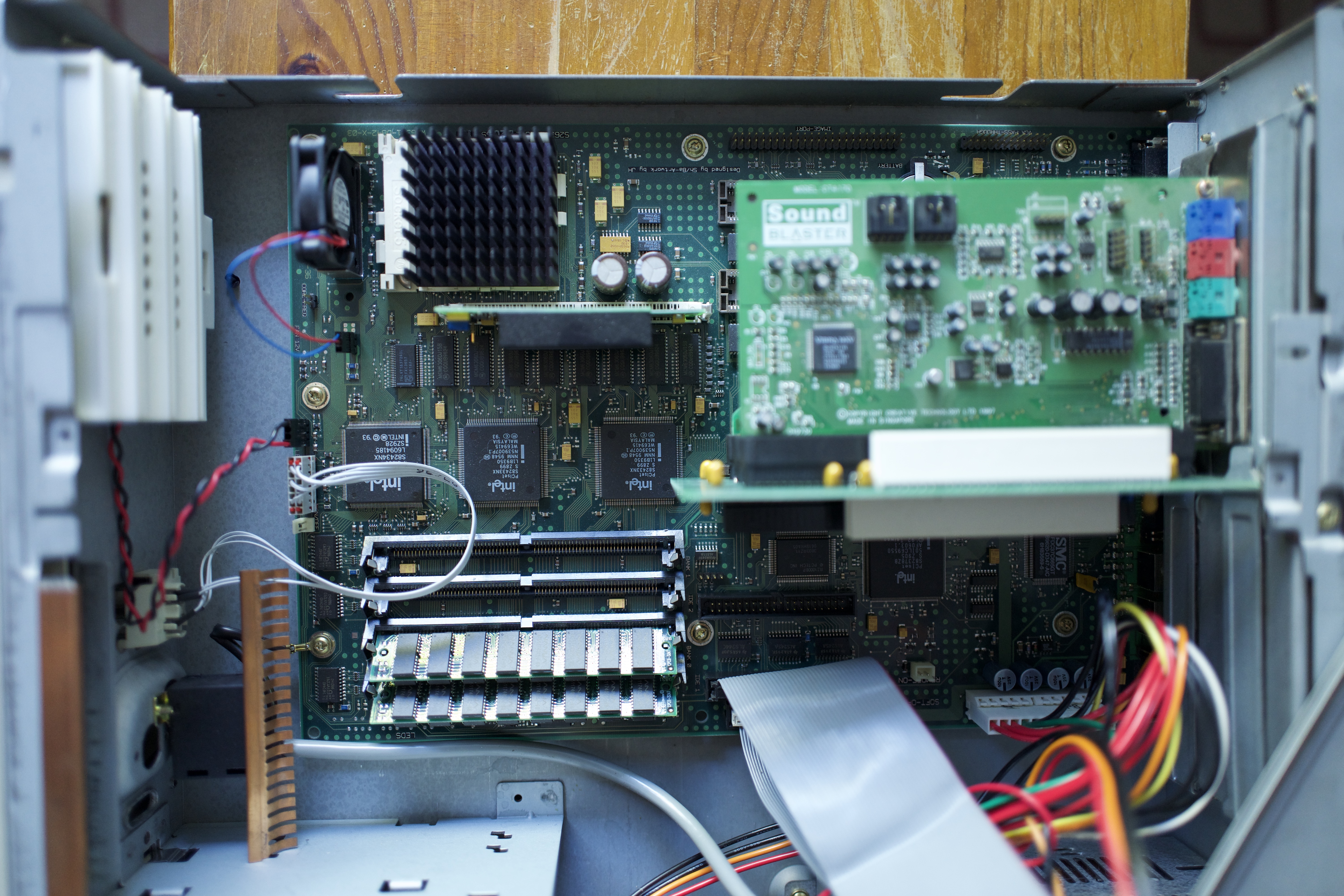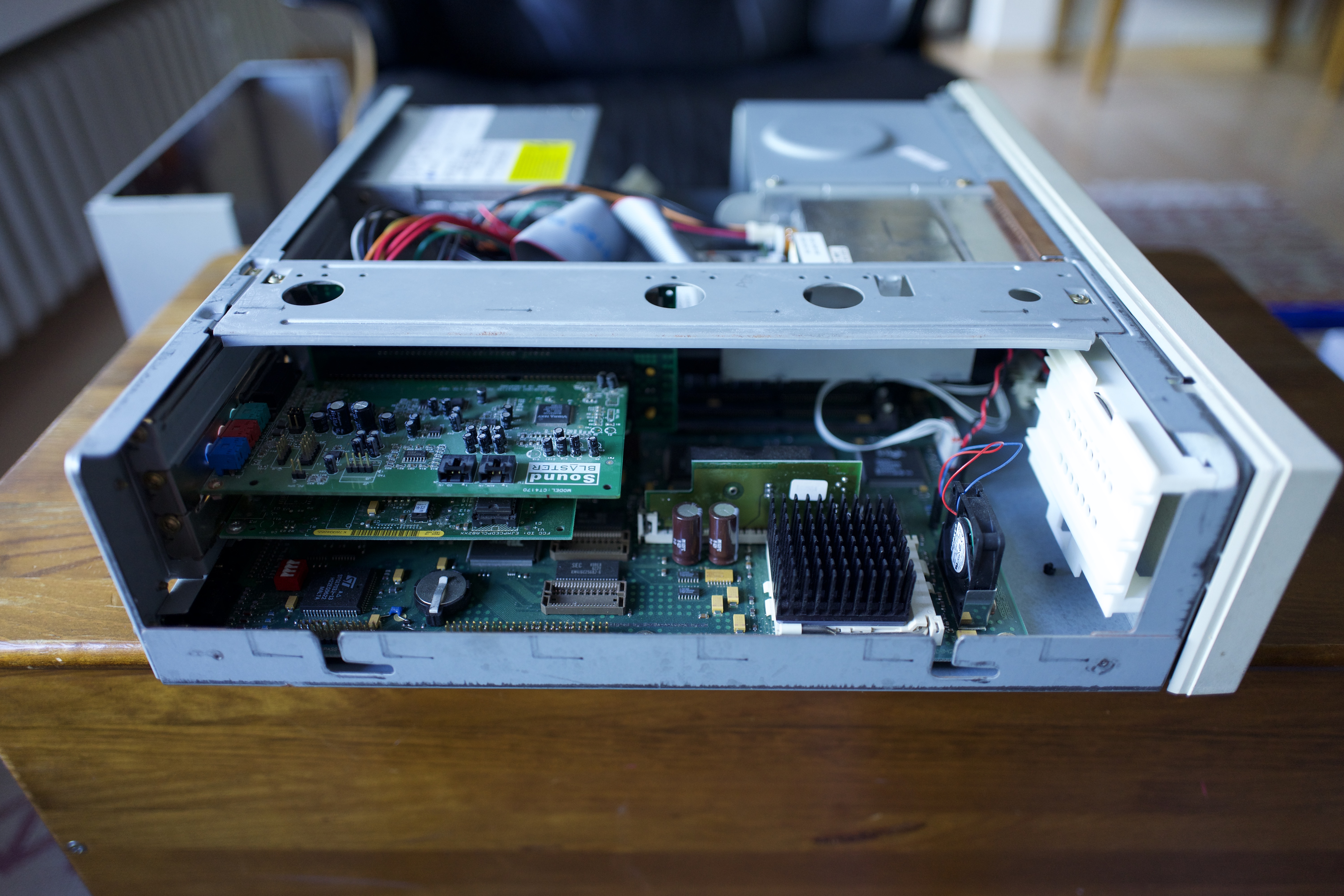Siemens Nixdorf
PCD-5H
1995

The PCD-5H was one of the many Intel-inside PCs in the 1990s with a Pentium processor and Windows. It could run Windows 95, opening the world of GUI for the majority of computer users, and Windows 98, bringing the Internet and the Web into a lot of homes. Reliable, extendible, filled with standard components, accepting standard software, this kind of PCs was the first computer for a lot of people at work or at home. Its network capabilities were a hardware extension, and also a standard component in those desktop PCs. It was the days of Netscape Navigator, Internet Explorer, and modem dial-in connection to news forums, email, and the Web.
Context: Command line and ISA
Before Windows 95/98, the majority of PC users dealt with MS-DOS. It meant learning a command line interface, and restricting one's work to one application at a time. Hardly any graphical user interface was possible, hardly any usage of a mouse. It also meant sharing data through floppy disks.
Manufactured by Siemens Nixdorf, this machine has roots in the German's try to participate in the silicon business. Standardisation like Industry Standard Architecture (ISA) meant that companies outside of Silicon Valley could at least for a while participate in the high-tech industry, and it meant a broad base for software development.
Changer: Mice and windows
Then Windows 95 came. Although the Graphical User Interface was popularized by the [Macintosh], the majority of people were using IBM-PC-compatible computers. Windows. 95 established GUI-as-default, bringing this kind of interface to almost every average computer user. It was not great, but it was good enough, finally. Its successor, Windows 98, made it possible and accessible to connect to the Internet and the Web. During those few years before 2000, thousands and millions of people "went online".
Enabler: A window into the world
With relatively easy to learn programs, people could not only read and use web sites, but also were able to build their own ones. The Netscape Navigator had a page-creator called "Composer" built-in. It could not do much, but enough in order to publish hypertext content. Microsoft Frontpage would let you build a web site wysiwyg, based on the paradigm of a hierarchical structure, and generating "main navigation" through that hierarchy. It featured templates for giving the site a certain style. Macromedia offered Dreamweaver for semi-professionals to build layouts, control HTML code, and use their javascript libraries for simple interaction.
For the majority of people, the Microsoft Office #msoffice suite - with Word, Excel, and Powerpoint - was the standard set of applications. A generation grew up formed by the paradigms of application-locked documents and files, where using one program meant to need to always use only this program for editing.



related activities
intended

PCD-5H website creation
Using Microsoft FrontPage 98, build a 90s website with texts and stories about 90s machines, and publish it on the Web.
related writing
The most Personal Computer
When #apple announced the Personal Computer, they were thinking of a computational device that would serve one human, to augment and expand one’s capabilities to think. “A bicycle for the mind”, like Steve #jobs used to call it. And the original Macintosh was their expression of the idea. read more →